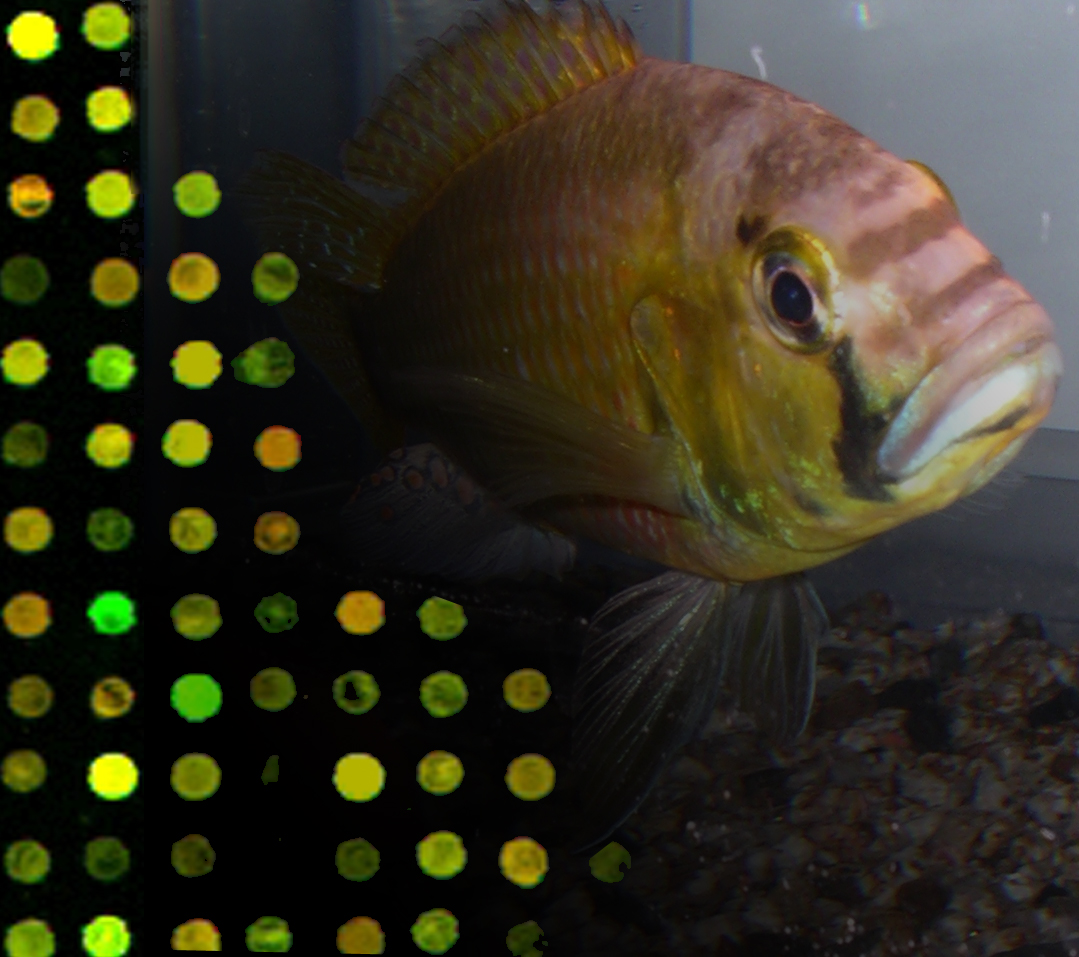Fish N' Chips; Functional Genomics of Social Plasticity in African Cichlid Fish.
Different cichlid species show a diversity of social structures. Suzy Renn
explains that some cichlid species are
monogamous, while males from other species mate with many females. Astatotilapia
burtoni, the species used in her recent study, develop a dominance
structure, with a brightly coloured dominant male maintaining a territory
while silvery females and subordinate males travel together in a school.
But these social structures are far from rigid, and once a subordinate male
becomes larger, he can over throw a dominant male. Cichlids produce a rich
repertoire of natural social behaviours in a lab tank where they are easily
observed, thus making them a powerful model system to study physiological
changes accompanying changing social status. As postdoctoral fellows, Renn
and Nadia Aubin-Horth teamed up with Hans Hoffman who had initiated a genomic
approach to the fish’s social interactions. The trio set out to identify
key differences in gene expression patterns between the brains of dominant
and subordinate A. burtoni males to lay the foundation
for research in their own labs, Renn at Reed College, Aubin-Horth at University
of Montreal, and Hofmann now at UT Austin.
First, the team built the custom cDNA microarray carrying approximately
4000 genes. After isolating the genes, sequencing them and searching
DNA databases to identify as many as possible, the team was ready to
test the fish’s
brains. Setting up 9 tanks with 2-3 male and 2-3 female fish, the team monitored
behaviour for 5 weeks, to clearly establish social structure, before extracting
RNA from the brains to compare the gene expression patterns using the microarray.
According to Renn, the team found the expression of 87 genes was increased
in the brains of dominant males, while 84 genes were upregulated in the
subordinate males’ brains. These "gene lists" include some changes already
known through classical experiments, including increased expression in dominants
for two neuropeptides, gonadotropin releasing hormone and arginine vasotocin,
that are also involved in reproduction, dominance and pair bonding in other species.
The gene lists also revealed new findings such tubulin and actin expression increased
in the dominant males’ brains, which could indicate changes in the structure
of the brain not previously known. Surprisingly, two neurotransmitter systems,
involving GABA and glutamate signalling, were oppositely regulated by social
status. The team admit that the detailed functional consequences of these findings
are not always clear, but know that the different expression patterns can have
profound effects on the electrophysiology of the brains.
Contrary to naive expectation, the team found that dominant males are
not simply "super
males", but instead, many of the genes upregulated in females are also important
for determining social status in males. This "systems level approach" complemented
the gene-list and allowed the researchers to discover that co-regulated gene
sets are associated with social status in a “modular” fashion. In
combination with current cichlid genome projects, these results pave the way
for future genomic studies to uncover how molecular modules are associated with
behavioural or physiological measures of social status in different contexts
and different species.
text by Kathryn Philips, Suzy Renn and Melati Kaye

